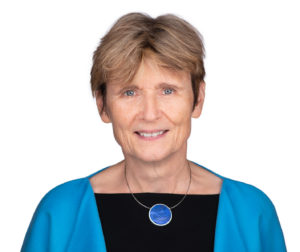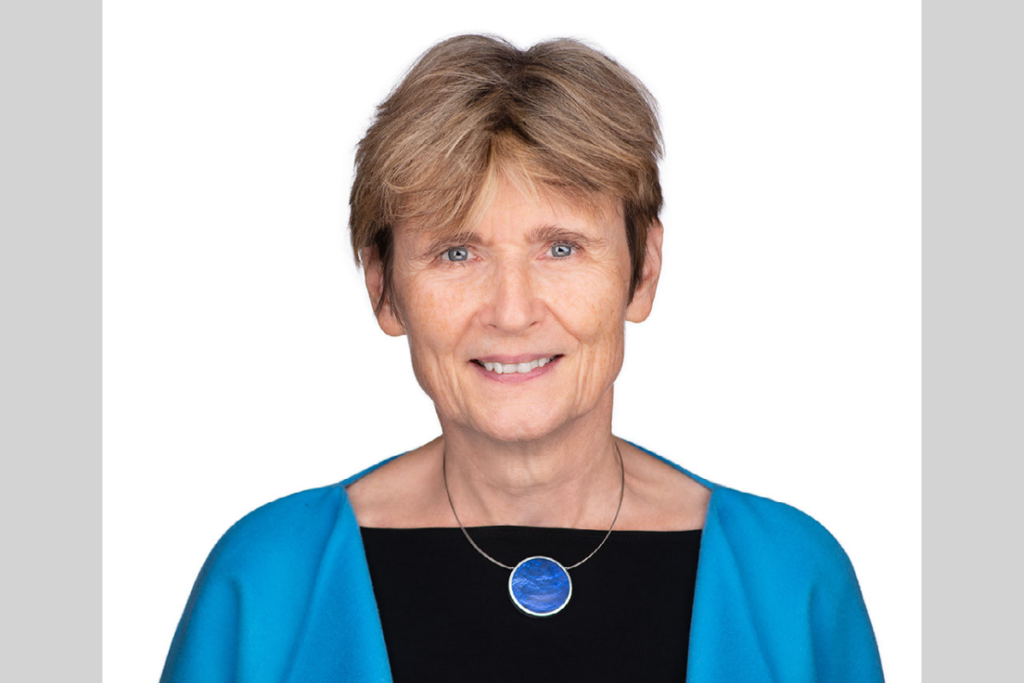
One of life’s great mysteries is how a single egg cell can contain all the information needed to create a fully specialized complex organism, including more egg cells.
Ruth Lehmann, director of the Whitehead Institute at MIT, has done a tremendous amount to solve that mystery. Beginning in her graduate student days, she uncovered a pathway that controls germ cell specification within the embryo. Since then, her work has continued to illuminate many unique facets of germ cell biology, providing a deep foundation from which to understand how the germline lineage carries genetic and cytoplasmic information from generation to generation.
For her achievements, Lehmann has been awarded the 2021 Thomas Hunt Morgan Medal for lifetime achievement in the field of genetics from the Genetics Society of America.
“Her work became textbook material, not just for developmental biology books, but biology books in general,” says Alexander Schier of Biozentrum, the University of Basel and Harvard University, one of the scientists who nominated Lehmann for the award.
Embryos gain a clear polarity early on, ensuring that the animal’s head and tail develop on opposite ends. As a graduate student at the University of Tübingen, working with Christiane Nüsslein-Volhard, Lehmann went looking for Drosophila mutants that lacked proper patterning.
Researchers had already observed that fly egg cells had a specialized cytoplasm with the instruction for germ cells located at the posterior pole. Lehmann wanted to find the germ cell determinants, those genes that told the germ plasm what to do. In her screening, she found a number of mutations that produced embryos with no abdomen, that were also missing their germ cells.
It was during these experiments that Lehmann first discovered oskar, nanos, and pumilio, genes she would continue to study throughout her career. As she characterized more and more genes with the same ‘posterior group’ phenotype, she realized that oskar acted as an important organizer of the pathway, and that all the other genes are needed downstream. Take out any individual member of the pathway, and no abdomen and in most cases no germ plasm nor germ cells.
“I had a very good genetically-based idea of how that pathway worked. Then molecular tools became available, which allowed us to study genes at the DNA, RNA, and protein level and ultimately to uncover their mechanisms of action,” she says. “I was at a crossroads. I realized I could not continue as a pure geneticist, but really had to become a molecular geneticist as well.”
She spent a year working at the MRC Laboratory of Molecular Biology in Cambridge to learn how to ‘clone’ genes with the goal to identify their DNA sequence and study their molecular function. At the end of her year at MRC, she had a position waiting for her on the faculty of the Whitehead Institute and the MIT Biology department, where she remained for eight years before moving to the Skirball Institute at NYU School of Medicine in 1996.
Once she cloned oskar and other genes, such as nanos, pumilio and egalitarian in the pathway, she found that the RNA of some of these genes are deposited by the mother to a specific location, at the posterior pole, of the egg. Control over the distribution of the protein product comes from spatially controlled translation of these localized RNAs, rather than localized transcription, as was commonly expected.
“This idea of RNA localization and translational control, that was quite revolutionary at the time,” says Schier. “This was a whole level of control that people hadn’t anticipated at the time. She always stumbles across these strange and intriguing mechanisms.”
Her pursuit of the mechanics of germ cell migration led her into lipid biosynthesis, perhaps somewhat unusual territory for a geneticist. She discovered that flies lacking the enzyme HMG-CoA reductase, which synthesizes cholesterol in humans (But not in flies—they have to take it up from their diet.), developed germ cells that looked normal, but were scattered around the egg. Somehow the enzyme was acting as the rate-limiting step for a homing signal for germ cells, but how it did so remained a mystery. Now, it appears that HMG-CoA regulates the production of a hormone that attracts the germ cells to the correct location in the egg.
“She sees things that others haven’t seen,” says Alex Schier. “She doesn’t follow fashion; she carves out her own niche and makes really interesting discoveries that then are followed up by many others.”
For her part, Lehmann describes her philosophy as “follow the phenotype.” Rather than focusing on a single molecule and studying it in different organisms or cell types, she’s chosen to stick with the problem and explore the entire panoply of molecules involved in the germline life cycle. So she and her group have studied how germ cells are initially set aside from the other cells in the body, how they remain “naïve” during larval stages until they eventually, in the adult, develop into gametes, egg, and sperm so that the life cycle can start anew.
“I’ve always been lucky to make these discoveries, and I think it’s because I’m not prejudiced,” she says. “I start from the mutant phenotype, which tells me about the normal role of the gene that was hit by the mutation. And if this defective gene leads to a protein that is novel or unexpected for the process we study, I’m not afraid to study something new and learn about the function of this gene, that has allowed us to discover novel pathways or placed known pathways into a novel context.”
That strategy hasn’t been easy. Following the phenotype has meant learning to work with a wide variety of biochemical processes, from RNA transport, localization, and translation to lipid phosphorylation, hormone signaling, and transposon-mediated chromatin regulation. “It’s a hard way, it’s true,” she says. “It only works when you get really good people in your lab, because the people in my lab become the experts in a variety of fields.”
Eventually, those experts leave and start their own labs, taking their projects with them. Attracting early career scientists who bring their own expertise in new techniques and fields is part of the process for Lehmann. “The projects grow as the technologies grow,” she says.
These days, she’s developing new cell biology methods to understand how the cell physically brings together the molecules that make up the membraneless germ granules. Traditional biochemical methods involve grinding up the cell, and that’s no use when you’re studying condensates that only form in a tiny region of the egg. Recent innovations in visualizing liquid-liquid phase separations are enabling more research in this area.
“I really want to understand how these molecules come together in germ granules to create activities only there, so that germ cells attain and maintain the special ability to create the next generation,” she says. “And that’s why I am still working on this.”
More than half of her postdocs have gone on to secure faculty positions, an indication of her leadership strategy, which she says emphasizes independence. “While they are in my lab, they can see whether they like being a scientist, whether they are good at being a scientist, because I’m not telling them every day what to do,” she says. “I don’t think that’s my role. I see the training in my lab as a pathway to independence.”
Alex Schier describes her as “a generous mentor,” ready and willing to go to bat for her students, postdocs, and colleagues against administrators who might be tempted to undervalue basic research. “She really is a great defender of fundamental research of discovery,” he says, “as well as a defender of research driven by individuals with creative ideas.”
The T.H. Morgan Medal recognizes extraordinary achievement in the field of genetics. Lehmann’s work spans many disciplines, including cell biology, developmental biology, and molecular biology, and her contributions have been recognized by various professional societies. Still, she firmly considers herself a geneticist.
“People ask, ‘What are you?’ At heart, I’m really a geneticist,” she says. “The problem always starts with genetics. That’s the discovery phase.”
The Thomas Hunt Morgan Medal recognizes lifetime achievement in the field of genetics. It recognizes the full body of work of an exceptional geneticist. Lehmann accepted the award at the 62nd Annual Drosophila Research Conference (#Dros21) and will present an Award Seminar online on April 28, 2021 from 1-2 p.m. EDT.













